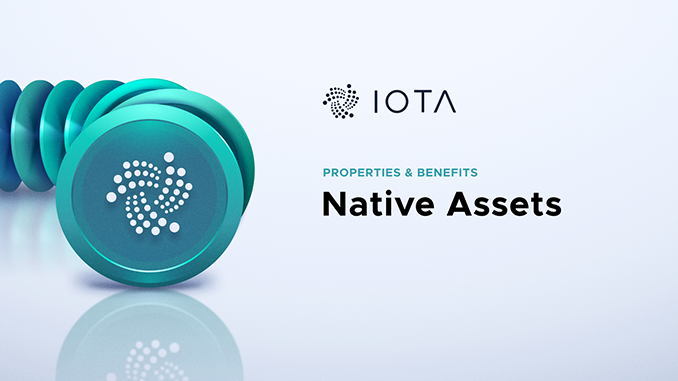
The IOTA Foundation has decided to rename the planned “colored coins” to “native assets”. In parallel, possible use cases and details will be published.
For “colored coins” and associated use cases, the IOTA Foundation has been beating the advertising drum for a year. The introduction of colored coins, which was actually announced with the launch of IOTA 1.5 aka Chrysalis, has been postponed indefinitely – but the topic continues to occupy those responsible. In a blog post, the IOTA Foundation explains that in the future they would rather speak of “native assets” instead of “colored coins”. This renaming already indicates that IOTA is considering how these “native assets” could score in the real economy in the future.
“Native assets” at IOTA – this is how they could be used
The tokens, now called “native assets”, can be easily created by anyone at IOTA by attaching a kind of sticker (tag) to quite ordinary IOTA. This tag cannot be changed afterwards. There is only the possibility to convert the “native assets” back into ordinary IOTA. At current prices, you can get a million IOTA to buy for around $1. Thus, in 2022 or later, users could contribute large amounts of individually defined tokens to the network at IOTA for small money. Based on this, the IOTA Foundation envisions various scenarios where “native assets” bring benefits:
- Local alternative currencies such as the Chimgauer could be digitally mapped to IOTA via “native assets.” Such regional money is attracting interest worldwide with the concept of strengthening the local economy and thus also cohesion.
- With “native assets,” other assets such as real estate or land could also be digitally documented on IOTA. Especially in developing countries, the IOTA Foundation sees great potential for such projects.
- NFTs are on everyone’s lips in the crypto year 2021 and can already be marveled at in a test run at IOTA. Native assets” could also be convincing in similar directions.
- From tickets to loyalty points and drink tokens, events could use their own IOTA “native assets” to take the step toward digitization.
- Corporate culture: With IOTA native assets, it would be possible to document overtime, bonuses, training and more. Especially in times of digital nomads and home offices, such methods would be progressive, the IOTA Foundation believes.
- In the music business, “native assets” would be a perfect way to mark rare recordings, organize admission to official online concerts or push digital merchandising, says the IOTA Foundation.
- The IOTA Foundation occupies a particularly large space in its sketches of “native assets” for the electric car division. The confusion of charging stations from many competing providers is annoying drivers, and in Germany alone, more than 400 market participants are responsible for the approximately 45,000 existing electricity stations for electric cars. To radically simplify access and billing and make them transparent, he said, an IOTA consortium could create “native assets” tailored specifically to the use case of charging electricity for electric cars. They would also allow anonymity and be transferable.
IOTA “native assets” – the problem is when?
The collection of ideas where “native assets” (formerly: “colored coins”) of IOTA could make sense and find users reads inspiring. But the real obstacle to implementation is hidden by the IOTA Foundation in a half-sentence that cites the “decentralized tangle” as the basis. Here, it is again indicated that “colored coins” or “native assets” will no longer play a role in the current IOTA 1.5. This is because IOTA 1.5 continues to rely on a central coordinator as the final authority. Only with IOTA 2.0 aka Coordicide is the ecosystem to become truly decentralized, with which “native assets” would really correspond to the standards of the crypto language. Then a royalty-free Tanglenet from IOAT would actually be special feature to push “native assets”. But the 2021 target date for IOTA 2.0 was abandoned in July and no new schedule was issued.
Conclusion: possible further development of IOTA ecosystem blocked by centralization.
As is unfortunately often the case with blog articles from the IOTA Foundation, the renaming of “colored coins” to “native assets” gives the impression that the backlog in development work is to be covered up with good ideas and flowery formulations. Because it is clear: Commercial users of “native assets” would hardly trust a central Tanglenet, where the controversial IOTA Foundation always sits on the longest lever through the coordinator. Incidentally, the absence of Coordicide aka IOTA 2.0 also blocks IOTA from entering the DeFi growth space. Since IOTA 2.0 has encountered technological sticking points in development, there is a risk that “native assets” will remain a pure test toy in DevNet for a longer period of time.
Best place to buy Bitcoin and IOTA:

Leave a Reply